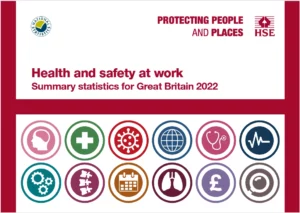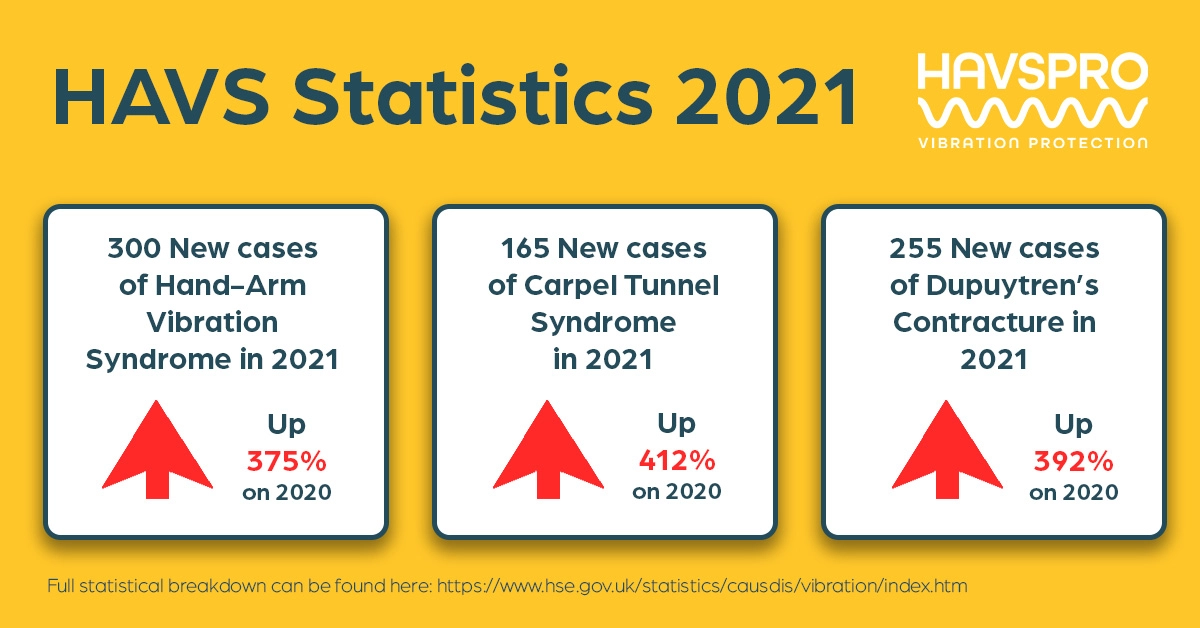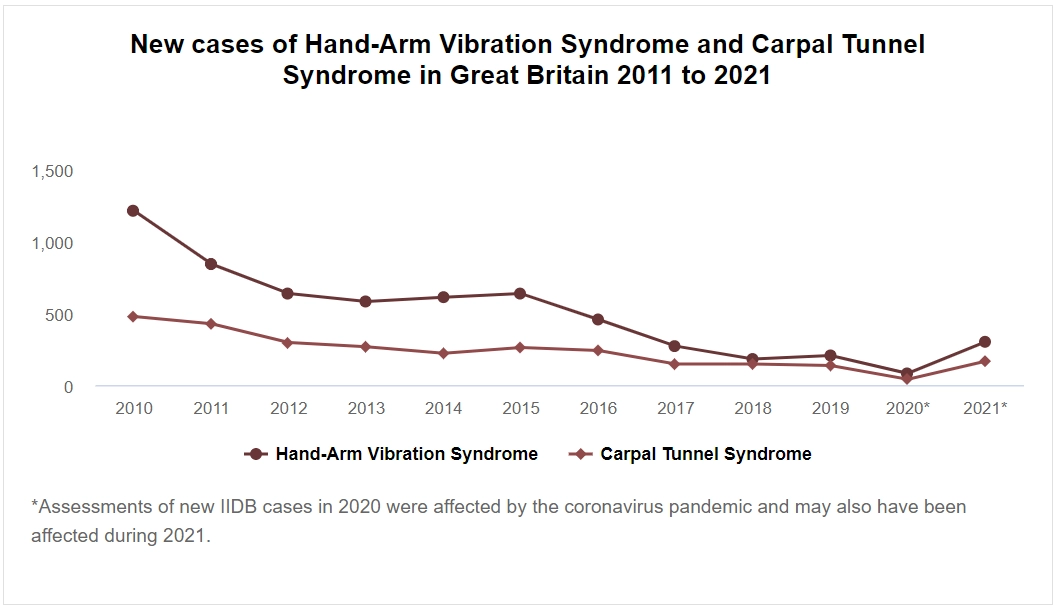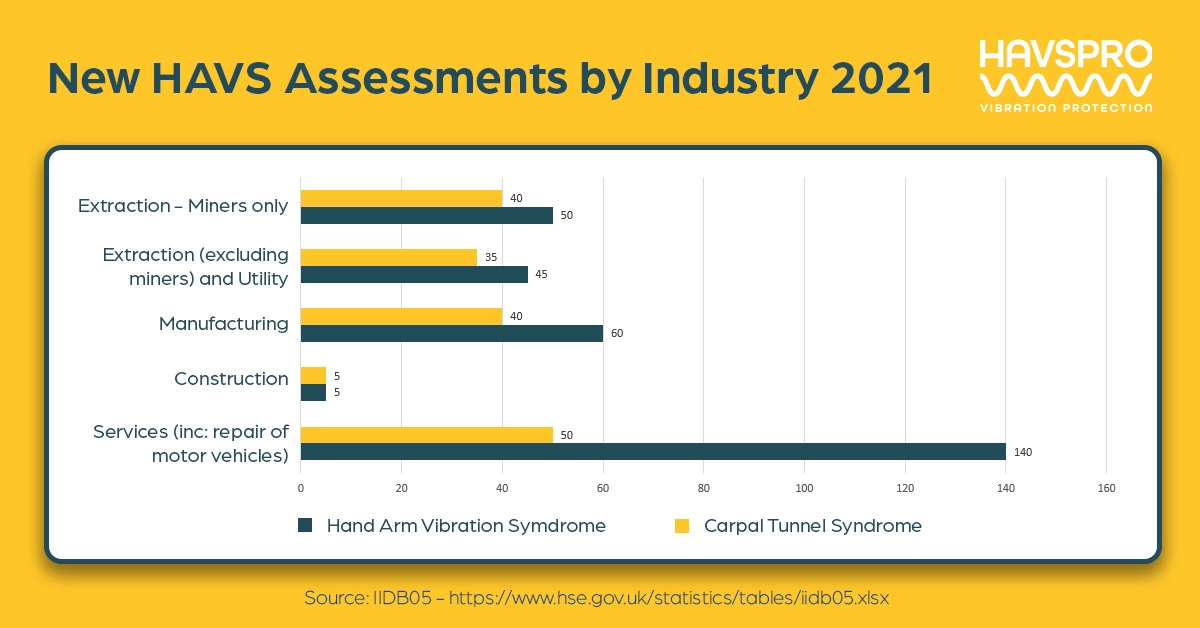 In November 2022, the HSE released the first complete set of health and safety statistics since the pandemic. Included was a full breakdown of the latest HAVS statistics which tell a story of significant concern.
In November 2022, the HSE released the first complete set of health and safety statistics since the pandemic. Included was a full breakdown of the latest HAVS statistics which tell a story of significant concern.
For a full breakdown of these statistics, they can be found on the HSE website, alternatively, you can drill down into the specific data concerning HAVS and the associated health-related conditions here.
What do the latest HAVS Statistics show?
Before we look at the stats that have just been released, we should note that there has been a pandemic and this is certainly going to effect the numbers for 2020.
However, let’s look at the figures for 2021, that have just been released. These show us that the number of Hand Arm Vibration Syndrome (HAVS), Carpal Tunnel Syndrome and Dupuytren’s Contracture are all up year on year – as the image below shows.

However, this isn’t quote the whole story, especially when we take into consideration the pandemic.
So, what do the statistics show us over the last 11 years? As the HSE graph below shows, the numbers reported for HAVS new cases in 2021 are at a 5 year high. You have to go back to 2016 when they were higher than those reported for 2021. This is particularly worrying as the numbers for 2021 are also caveated with the likely impact of the pandemic.

It is a similar story when we look at the number of new cases of Carpal Tunnel Syndrome with numbers not breaching 165 new cases since 2016, when they were at 240.
Dupuytren’s Contracture is only a recent addition to the IIDB so there is only data for this condition dating back to 2020. But we can see that the trend is the same.
HAVS Statistics by Industry
If we take a look at the latest HAVS Statistics from another angle, we start to see another picture emerging…
… the industries that we think will have the highest number of new HAVS cases are not the biggest offenders. In fact, the graphic below shows that the construction industry reported the fewest number of new cases in the latest HAVS statistics.

This would suggest that the construction industry is leading the way in managing the risk posed by vibration over-exposure and is making in-roads to reduce the number of new cases to as low as reasonably practicable (ALARP).
However, the same can NOT be said for the manufacturing or mining industries. Looking at the graph above, it is obvious that the multiple industries covered by the term “services” is the biggest offender.
Let’s look at the types of business activity that the HSE have classified as “services”. The statistics show that “services” include businesses that have a SIC 2007 section code of G-S (full details can be found here). This includes, but is not limited to; repair of motor vehicles, accommodation and food service activities, and transport and storage.
It is sound reasoning to suggest that the vastness of this section would explain the high number of new HAVS cases. But what these statistics also show is that HAVS can occur in ANY industry or business where there is exposure to vibration as a result of using handheld tools or equipment.
HAVS and Carpal Tunnel isn’t exclusive, it can result from any vibration exposure where the risk isn’t managed to ALARP.
In conclusion
Looking at the latest HSE HAVS statistics, it is clear that there is still a significant problem and employees are still being exposed to vibration without the risk being managed fully.
But what can be done?
There are a number of steps that we can all take to start to reverse the trend of increased new cases being reported.
Risk Management
The first step is for employers to ensure they are fully and completely managing the risk of vibration exposure, whether hand arm or whole body. There is guidance available from the HSE which promotes the elimination of vibration exposure or to lower it to ALARP but what can employers do when this isn’t possible?
Continuous measuring and monitoring of vibration exposure, such as that offered by HAVSPRO, gives both employers and employees the opportunity to manage the risk proactively. By continuously measuring vibration exposure, in realtime, on the tool as it is experienced by the user, you can see exactly when an operator is in danger.
By using alerts when Exposure Action Values (EAV) and 90% of Exposure Limit Values (ELV) are reached, action can be taken BEFORE over-exposure occurs – without guessing or timing or relying on assumed data.
Education
Another line of attack we can take to arresting the trend of new HAVS cases comes in the education of operatives. Employers have a legal responsibility to make sure their operatives all understand the risks posed by vibrating tools and equipment.
Whilst the statistics suggest this message is getting through to those most at risk in the construction industry, the data would suggest there is still a long way to go in spreading the word further afield.
ANY business activity that exposes operatives to vibration, through handheld tools or via sit-on equipment, needs to ensure they are educating and raising awareness of the risk of vibration exposure.
It doesn’t matter how small the exposure, or how small the risk may seem to be, the legal obligations for employers still apply.
Make sure your employees understand how serious the consequences can be if they develop HAVS. Their lives will be negatively affected for the rest of their lives.
CREDIT: Acoustic Bloke
Industry leaders must play their part
There is also an important role for HSE industry leaders and consultants to play in bringing these worrying HAVS Statistics down. Education and awareness raising of the following is key to reversing the trend:
- How to manage the risk of vibration exposure
- HAVS training for employers and operatives
- Best practise for reducing the risk to ALARP
- Understanding the role Occupational Health should play in HAVS risk management
- The severity of the consequences of contracting HAVS or any of the associated health conditions.
And the final message that we can all take from the latest HAVS statistics is that the problem affects everyone who has vibration exposure as part of their business activity – It’s not just construction!
If you would like to discuss your HAVS risk management strategy, call us today on 01332 547 148 and one of our HAVS experts will be happy to talk to you.
Download the HAVSPRO Brochure
Discover how HAVSPRO monitors vibration levels accurately and triggers alerts to protect your staff and organisation against the risks of HAVS and WBV (whole body vibration).
It monitors individual tool vibration levels and the exposure each person has to it.
HAVSPRO then collates all this data and creates customisable reports to help you prevent overexposure.
Find out everything you need to know in our brochure – simply complete the form!
Find out more about HAVSPRO and how it can help you protect your staff and business: 01332 547 148 or you can download our Employers Guide to HAVS

